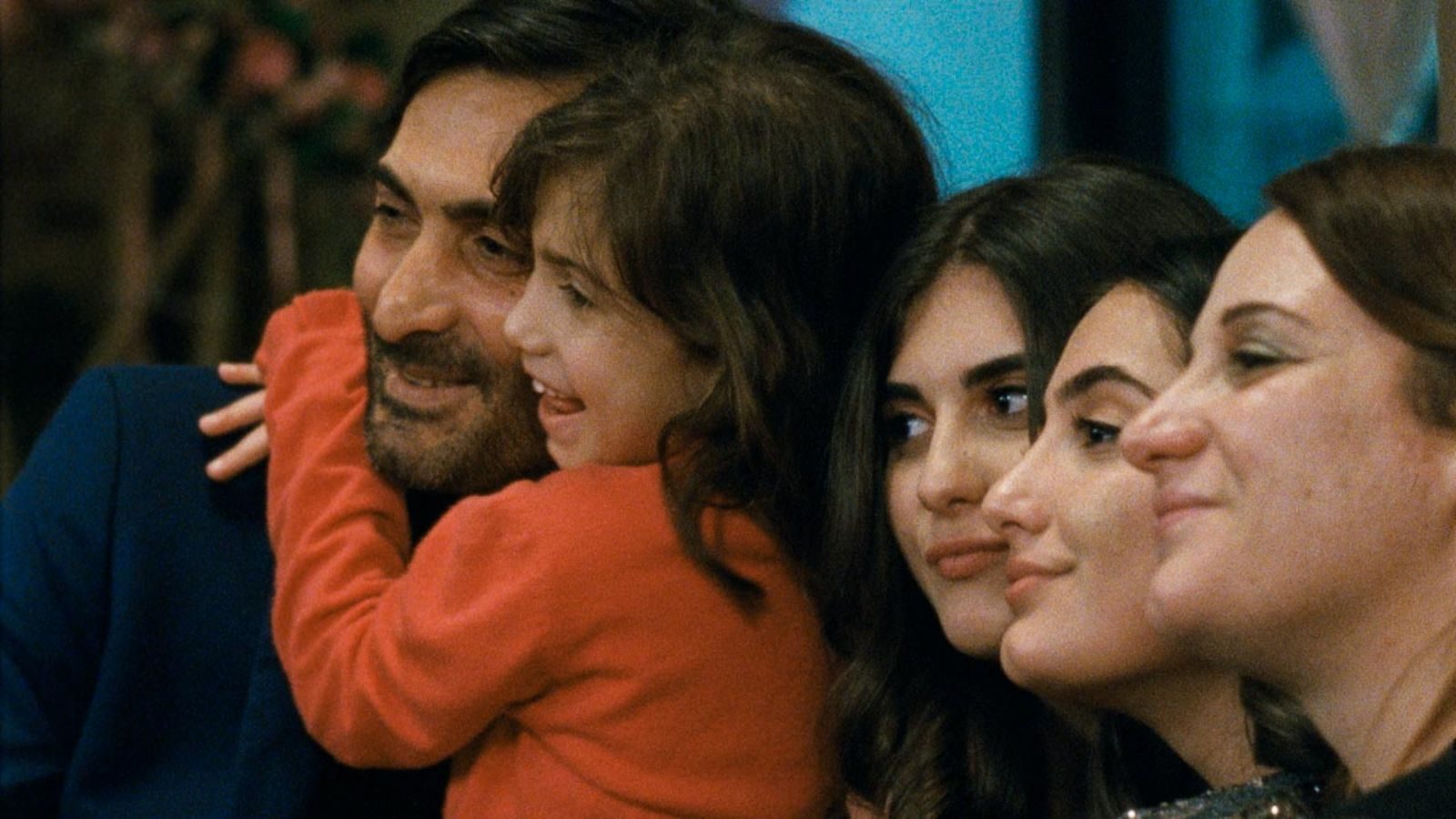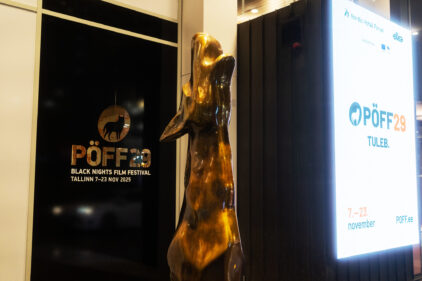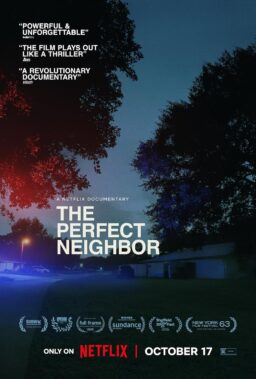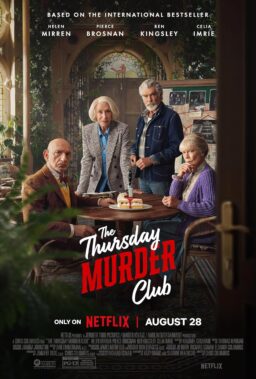The 59th Annual New York Film Festival is in the books. Time for a post-mortem look at some revivals and notable films. Viewers were tempted by The Scottish Play, “The Power of the Dog” and Paul Verhoeven’s latest, “Benedetta.” That last one earned the ire of a row of protestors during its debut, one of whom had the nerve to wield a sign demanding reparations for a film he hadn’t even seen. By the time I got to a screening of this supposedly sordid tale of lesbian nuns, the plague and blasphemy, the protest line had dwindled down to one dude. To say I was disappointed by that reduction would be an understatement. I was also somewhat disappointed by “Benedetta”; its provocations are quite tame and dull. But it’s saved by the wicked, nasty streak of humor that runs through it. The best shocks are in the words, not the images.
Like “Benedetta,” this year’s crop of films featured several stories with women protagonists, including the excellent closing night film, “Parallel Mothers.” Two of my other favorites in this vein were Ryûsuke Hamaguchi’s anthology “Wheel of Fortune and Fantasy,” and “Passing,” Rebecca Hall’s adaptation of Nella Larsen’s 1929 novella. In the latter, Tessa Thompson and Ruth Negga are both superb as two Black women who can pass for White. Negga’s character makes a fragile career out of it, while Thompson only flirts with the idea occasionally. The suspenseful opening moments initially corrupted my suspension of disbelief—as soon as I saw Thompson’s face lit up by Eduard Grau’s Academy-ratio, black and white cinematography, I said “gurl, there’s no way you’re fooling anybody. Not with that nose and mouth!” But then I remembered I know what to look for when it comes to recognizing my own people. Once I realized that, “Passing” cast a hypnotic spell for me. It’s not without problems I’d love to delve into at another time, but the end result still works very, very well.
Jonas Carpignano’s “A Chiara” is the third part of his Calabrian trilogy after “Mediterranea” and “A Ciambra.” I haven’t seen either of those, so something may be lost in translation for me. As its 2 hour runtime creeped by, I grew impatient with the Chiara of the title, though Swamy Rotolo gives a very good performance. The audience is ahead of her at every turn, which means we’re sitting there waiting for her to figure things out. As she slowly discovers her family has criminal ties, the film shifts from a tender, well-observed portrait of a father and teenaged daughter to a weak exercise in suspense that features chases, narrow escapes and a brief look into the inner workings of a criminal empire and the equally sinister government agency that fosters children of crime families.
Throughout, Carpignano keeps Rotolo in tight closeups, allowing us to see her mind working as she pieces together information or experiences one of the many confused emotions of an adolescent. It felt like there were less of these closeups when the film stopped being about her character in lieu of that creaky crime plot full of revelations you can see a mile away. Still, Rotolo’s performance should be commended, and the first half of “A Chiara” has a haunted quality I wish the film maintained throughout.

I’m not even going to pretend I understood what the hell “What Do We See When We Look at the Sky?” was up to for 150 minutes, but I can’t deny it cast a spell that was often quite enchanting. The more frustrated I got, the more interested I became. I’m not quite sure how that happened. Again, here we are with an ode to storytelling. Writer/director Aleksandre Koberidze has an offscreen narrator guide us through his dense tale about the denizens of a Georgian town. I wondered if the town itself were the narrator, as it knew every secret and every tradition. Yet, the narrator also goes off on more universal digressions, and I felt compelled to follow him even when I was left stranded.
Whoever’s telling this story, they start with a fantastic hook. Two potential lovers, Lisa and Giorgi have a Meet Cute on a street corner. Later, they meet again and immediately decide they belong together and hatch a plan to meet at a certain café to cement the agreement. However, there are evil forces at work! An evil eye has issued a curse, and though they are not technically allowed to speak to humans, four objects of nature and man-made construction reach out to Lisa to warn her about it. The seedling, an old rain gutter and a traffic camera provide details, but the wind, who had the most important details, could not reach Lisa due to a parked car blocking its path. The wind was supposed to tell her that she and Giorgi would wake up in the morning unable to recognize each other, and would be haunted forever by their missed meeting. The narrator issues this transformation by demanding the audience close its eyes until a bell rings.
When we open our eyes, the actors are not only different, but their characters have also lost any skills they had in their old incarnations. Lisa is no longer a medical professional, and Giorgi is no longer a soccer player on a team that appears to be headed for the major tournament that will keep everyone in town glued to their TV sets. The narrator tells us about the two places in town everyone watches these tournaments, the traditions behind those places and what it means if you’re beholden to a specific location. We even get a subplot featuring two dogs who want to watch the games together, but won’t do so because of their differing location preferences.
There’s also a story about some filmmakers who want to end their film with pictures of lovers in various parts of town. How they manage to rope in a clueless Lisa and Giorgi, accidentally mistaking them for the lovers they would have been if it weren’t for that pesky curse, and how all this eventually plays out I’ll leave for you to discover. The fable-like feel of “What Do We See When We Look at the Sky?” is never broken, which makes its final moments surprisingly touching and heartfelt. It’s been a long time since I gleaned this much enjoyment from being so damn confused.

On the Revivals front, there were numerous films of interest getting restorations and reissues. The most exciting revisit for me was Wendell B. Harris Jr.’s 1990 con man classic, “Chameleon Street.” I’d never seen it on the big screen, and it plays much more grandly there than it did on my bootleg VHS. The film’s title isn’t an address, it’s a description of the main character. “I think, therefore I scam” is the motto of William Douglas Street (Harris), the protagonist with an uncanny knack for changing himself into exactly what the current situation calls for at the time. Tired of working for his Dad, Street branches out into several hustles, pulling in other people and even putting them in danger. At one point he performs surgery on a woman despite having only book knowledge of the procedure. Yet everyone believes in him, at least initially, because he’s preternaturally good at what he does.
Harris works a similar chameleon-like magic on the audience. With his rich voice and a visage that oozes confidence and camaraderie, the-writer-director-star smoothly drags us along on his character’s journey. The film raises so many intriguing questions that it warrants multiple viewings. The one that always sticks with me is whether Street’s Blackness has anything to do with how easily he can manipulate other people’s perception of him. When he pumps up his credentials, do some of his marks see him as “one of the good ones” and lower their guards? Harris certainly incorporates race into the story—a run-in with a racist White man begins with a Cyrano-inspired dismantling of the racist’s insults and ends with Street getting his ass kicked for his trouble—but he leaves most of the interpretation to us. What ultimately brings down Street isn’t the system or racism, it’s his own sloppiness. His explanation as to why he got caught, and his easygoing bemusement at the thought, is worth the price of admission.
The all-women, all-minority filmmakers did not mince words at the Q&A for the restoration of 1987’s Oscar nominated documentary “Who Killed Vincent Chin?”. Christine Choy, Renee Tajima-Peña, Juanita Anderson, and Nancy Yao spoke of the troubles they had getting financed, the racism and sexism they endured and the White man hired to keep tabs on them. The general consensus was these women of color were not good enough to make a documentary despite their past credentials. Sadly, their comments felt like an extension of the themes of their documentary. This is a harrowing true crime story that made me so infuriated I could barely remain in my theater seat. Directors Choy, Tajima-Peña and their editor, Holly Fisher create a Rashomon-style experience by alternating between conversations with the family of the victim, the witnesses to the crime and Robert Ebens, the man who got away with murder.
Chinese-American Vincent Chin had been in a violent altercation with Ebens and his son duo at a Detroit strip bar. Afterward, the two men, who had allegedly made racial slurs believing Chin was Japanese, stalked Chin through the neighborhood. When they found him, Ebens’ son held Chin down while Ebens beat him to death with a baseball bat. This was seen by two Black cops interviewed in the film, who made the arrests. From there, we’re taken through a miscarriage of justice that indicts the court system and the auto industry whose lack of competition with Japanese automakers at the time caused massive layoffs at plants. There was an intense amount of anti-Japanese sentiment as a result.
Lily Chin, Vincent’s mother, leads a heartbreaking, ultimately futile quest to get justice for her son. Her scenes are countered by interviews with Ebens, who is so remorseless and privileged that my audience started talking back to the screen in response to his cruel comments. With all the anti-Asian violence and sentiment brought to the forefront by the pandemic and the politicians who stoked as much blame towards China as the ‘80s politicians did toward Japan, “Who Killed Vincent Chin?” is more timely than ever.
To close out, I must say a few words about the most surprising feature in the Revivals section, Melvin van Peebles’ independent film success “Sweet Sweetback’s Baadasssss Song.” I was too terrified of the kind of audience I would have gotten on the snooty Upper West Side to brave the film at Lincoln Center, but I’ve seen it multiple times and it’s now out on disc as part of a must-own Criterion box set. Like William Douglas Street, the late maestro van Peebles knew how to execute a successful hustle. His 50-year-old magnum opus is still a shocking DIY masterwork, a film that blatantly doesn’t give two damns about your feelings or your morals. In many ways, some of them incredibly crude, it’s a corrective to all the years of the studio system’s sexless and powerless Black characters. Most shockingly, it not only lets its hero ride off into the sunset after exacting vengeance against The Man, it also threatens his return to “collect some dues.”
Even though it gives me a splitting headache every time I watch it, I’ll still tip my Sweetback-influenced hat to our collective cool uncle, Melvin van Peebles, for the legacy “Sweetback” created. Not only did it show independent filmmakers how to make their own films without interference, it created a genre that spent its entire existence trying to recapture the once-in-a-lifetime lightning in a bottle “Sweet Sweetback” caught. I sure hope it got a lot of pearls clutching at the New York Film Festival.
See you next year!












